This article has been reviewed according to Science X's editorial process and policies. Editors have highlighted the following attributes while ensuring the content's credibility:
fact-checked
peer-reviewed publication
reputable news agency
proofread
Mystery solved: Scientists ID Caribbean sea urchin killer
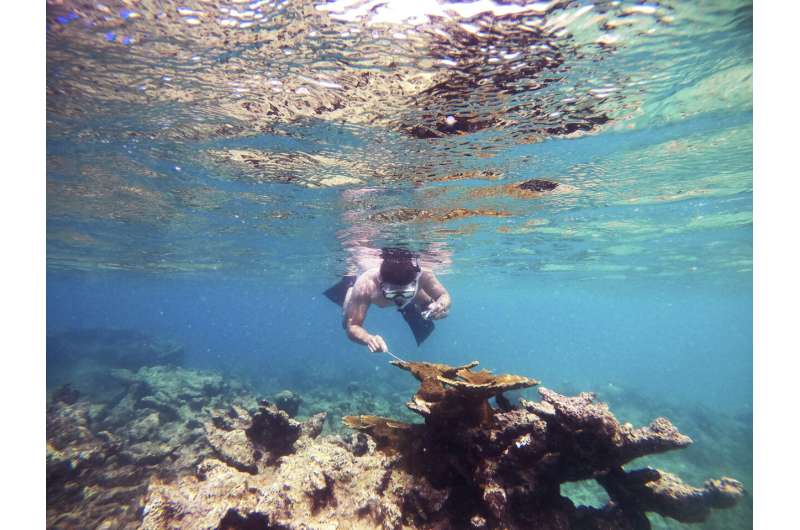
Last year, sea urchins in the Caribbean started getting sick—shedding their spines, dying off and throwing reef ecosystems into chaos. Now, scientists think they've caught the killer in this marine murder mystery.
A tiny single-celled parasite is to blame for the massive die-off, researchers reported Wednesday in the journal Science Advances.
"The case is closed," said study author Mya Breitbart, a marine microbiologist at the University of South Florida.
These long-spined sea urchins, or Diadema antillarum, are prickly black creatures that hide out in reefs across the Caribbean. They play a key role as "lawnmowers" of the reef, Breitbart said, eating up the algae that grows on corals.
But in January 2022, these animals started showing strange symptoms—their sharp spines drooping and falling off, their suction-cup feet losing their grip—before dying off in droves, from the Virgin Islands to Puerto Rico to Florida.
For marine scientists, it was deja vu: Another die-off swept through the region in the 1980s and slashed sea urchin populations by around 98%.
That case was never solved. But this time, an international team of researchers jumped into action, taking samples from sick urchins and healthy ones across the Caribbean to look for genetic clues.
They didn't see signs of viruses or bacteria, said study author Ian Hewson, who researches marine diseases at Cornell University. But they did spot traces of tiny single-celled organisms called ciliates, which only showed up in the sick urchins.
Though most ciliates don't cause disease, this kind has been linked with other aquatic outbreaks, making it a prime suspect, Hewson said.
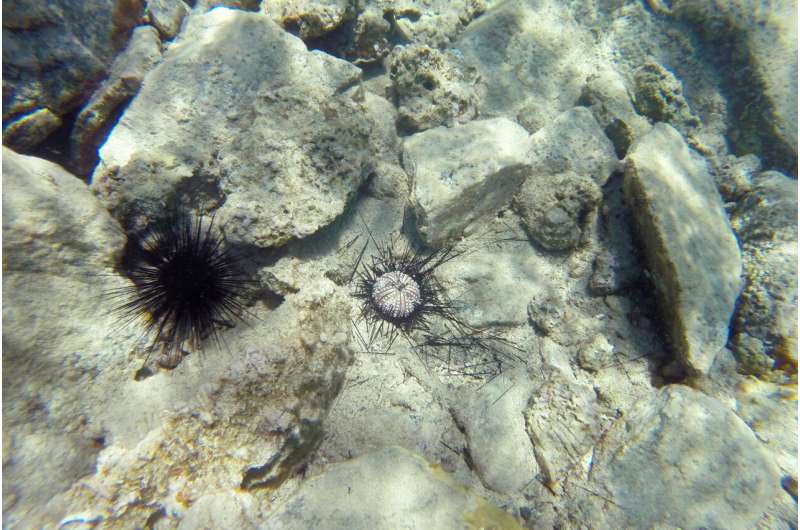
To confirm they'd caught the killer, scientists placed the parasites in tanks with healthy urchins grown in captivity to see how they'd react. Out of 10 urchins who were pitted against the tiny creatures, 60% of them died—after showing the same symptoms researchers were seeing in the wild.
It's possible that this same parasite also caused the die-off in the 1980s, but scientists can't be sure, Breitbart said.
And they haven't figured out a way to treat the diseased urchins. But they're hopeful that knowing the source of the die-offs will help conserve the reefs, especially once they learn more about how the parasites spread, Breitbart said.
-
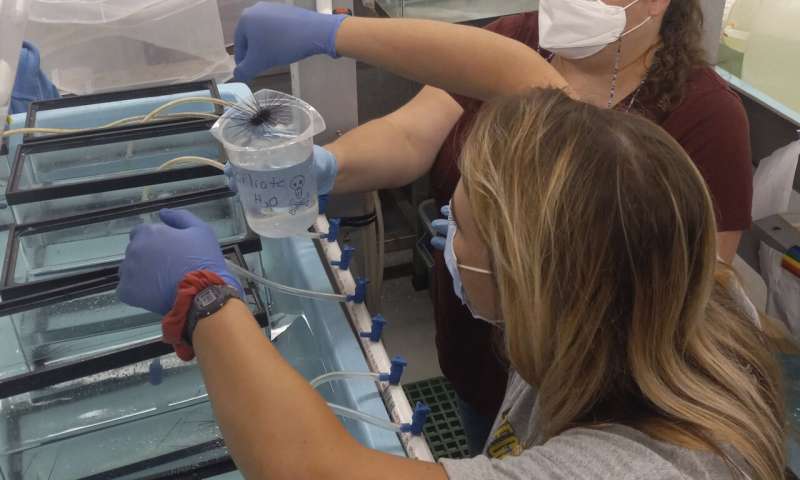
In this photo provided by researchers, University of South Florida researchers Mya Breitbart and Isabella Ritchie work with a sea urchin during a ciliate exposure experiment in the University of South Florida aquarium research facility in St. Petersburg, Fla., on July 7, 2022. A tiny single-celled organism is to blame for a massive die-off of sea urchins in the Caribbean in 2022, researchers reported Wednesday, April 19, 2023, in the journalScience Advances. Credit: Makenzie Kerr/University of South Florida College of Marine Science via AP -
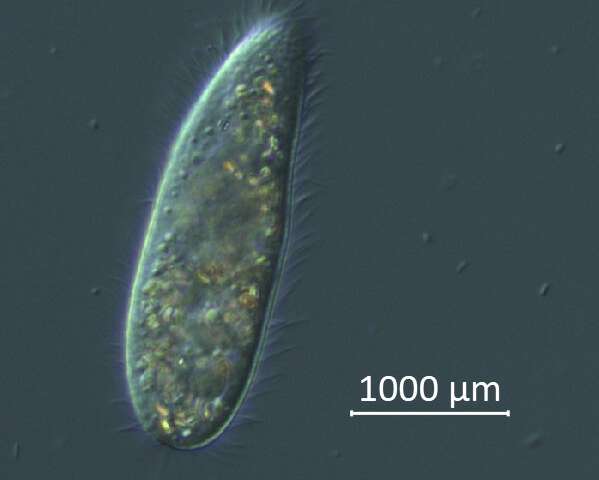
This photo provided by researchers shows a Philaster apodigitiformis ciliate microorganism viewed under the microscope at the University of South Florida College of Marine Science in St. Petersburg, Fla. The measurement scale of 1000 micrometers is equal to 1 millimeter. The tiny single-celled organism is to blame for a massive die-off of sea urchins in the Caribbean in 2022, researchers reported Wednesday, April 19, 2023, in the journal Science Advances. Credit: Mya Breitbart/University of South Florida College of Marine Science via AP -
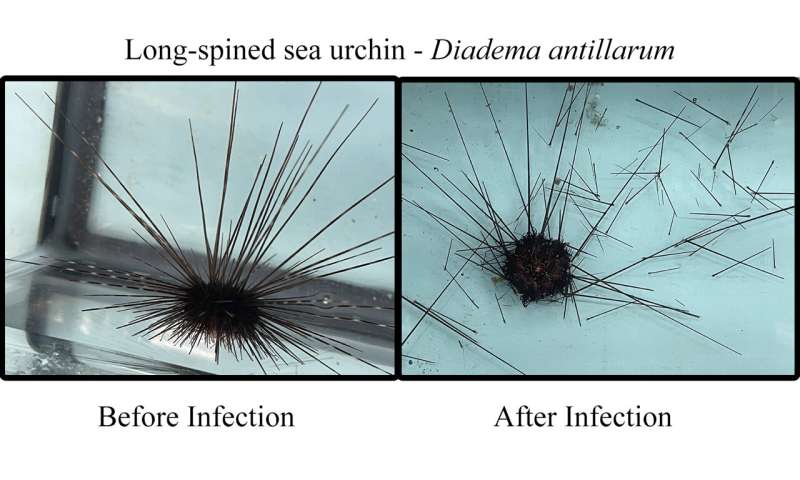
This combination of photos provided by researchers showing the same sea urchin before and after infection with ciliate microorganisms in the University of South Florida aquarium research facility in St. Petersburg, Fla. A tiny single-celled organism is to blame for a massive die-off of sea urchins in the Caribbean in 2022, researchers reported Wednesday, April 19, 2023, in the journal Science Advances. Credit: Makenzie Kerr/University of South Florida College of Marine Science via AP -
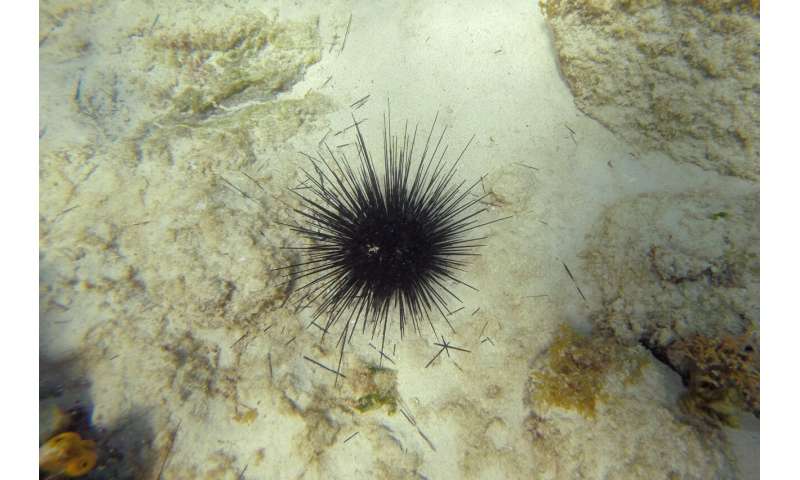
This photo provided by researchers shows spines falling off a ciliate parasite-affected sea urchin in Aruba in August 2022. A tiny single-celled organism is to blame for a massive die-off of sea urchins in the Caribbean in 2022, researchers reported Wednesday, April 19, 2023, in the journal Science Advances. Credit: Ian Hewson/Cornell University via AP
These urchin deaths and other stresses have already transformed the reefs, added Don Levitan, a marine scientist at Florida State University who was not involved with the study.
Back before the first sea urchin die-off, Levitan recalled seeing reefs in the U.S. Virgin Islands blanketed in the spiny creatures. Now, those reefs look much different—choked by algae, struck by coral disease and stressed out from rising temperatures.
"Coral reefs in the Caribbean are in trouble," Levitan said. "We're at a different place than we were 30, 40 years ago."
More information: Ian Hewson et al, A scuticociliate causes mass mortality of Diadema antillarum in the Caribbean Sea, Science Advances (2023). DOI: 10.1126/sciadv.adg3200
Journal information: Science Advances
© 2023 The Associated Press. All rights reserved. This material may not be published, broadcast, rewritten or redistributed without permission.
















